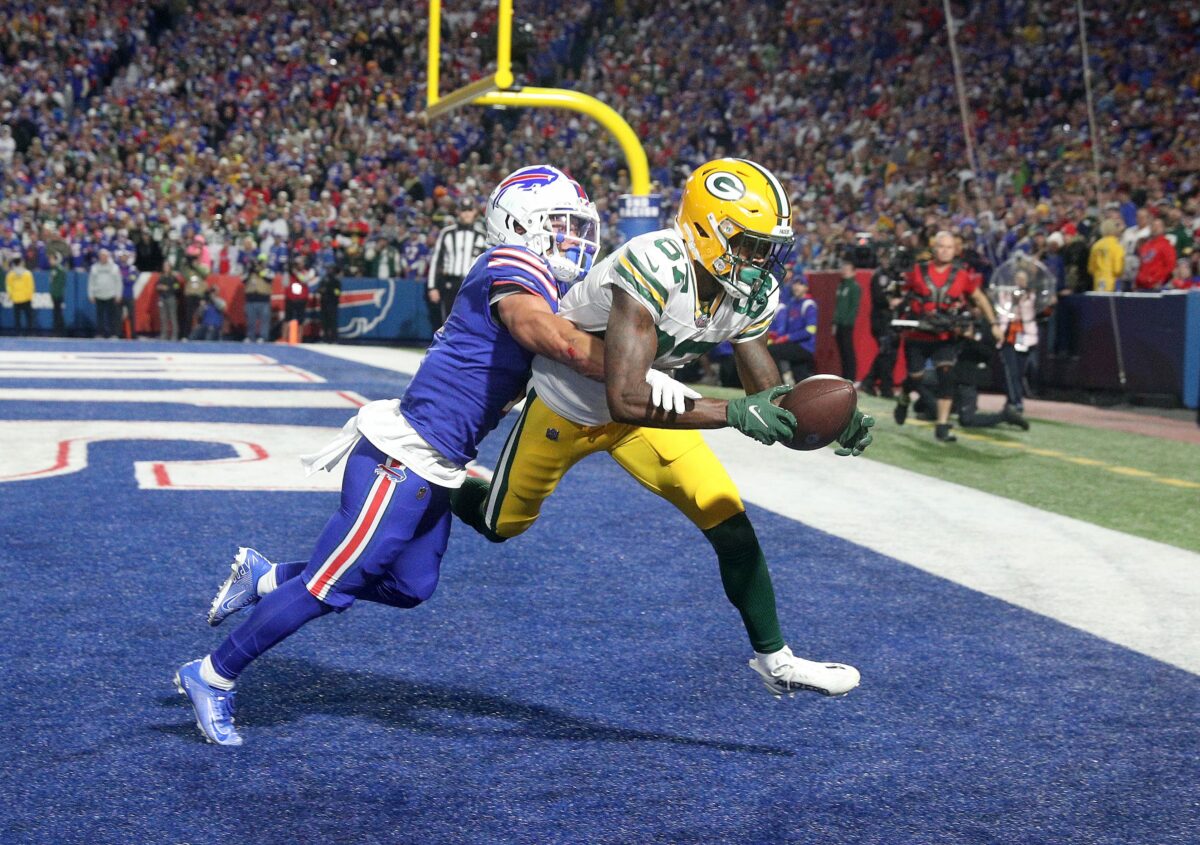[anyclip pubname=”2103″ widgetname=”0016M00002U0B1kQAF_M8036″]
None of us truly know what to expect from the Green Bay Packers offense this season with a first-time starting quarterback and a young group of pass catchers, but one realistic area of improvement for this group is in their efficiency on downfield passes.
The Packers’ lack of success on these deep pass attempts wasn’t for a lack of trying, however. According to Sharp Football, on passes of 30+ yards, Aaron Rodgers had 40 attempts but completed just six of them. For some context, Rodgers led the NFL in the number of downfield passes, with only one other quarterback registering at least 30 attempts of 30-plus yards. The end result was the Packers ranking 30th in expected points added (EPA) per attempt, 29th in success, and 29th in yards per attempt (YPA). Rodgers also threw four interceptions to just two touchdowns.
PFF, which considers passes that travel at least 20 yards to be deep, tells a similar story. Rodgers would rank second in attempts on these types of passes in 2022 but 29th in yards per attempt and 26th in completion percentage. While Rodgers’ 12 touchdowns were the second-most, he threw the third-most interceptions as well.
Oftentimes, whether it be something good or something bad, there are a number of factors that contribute to the results. For the Packers’ offense on these downfield throws, some contributors to the poor numbers could have included the overall down year from Rodgers, who did not play anywhere near his MVP level and was also dealing with a thumb injury that, to some degree, may have affected his accuracy on these throws.
Green Bay was also navigating its first season without Davante Adams and asking two rookie receivers, Christian Watson and Romeo Doubs, who dealt with injuries, to play large roles. Randall Cobb and Allen Lazard would both miss time with injuries as well. There was also a lot of movement due to injuries along the offensive line through the first nine weeks of the season. The negative trickle-down effect of this to the passing game is less time in the pocket for these types of plays to develop. The Packers also had very little playmaking from the tight end position.
With Love at quarterback, we likely won’t see as many of these downfield attempts. Instead, there will be an added emphasis on getting the pass catchers the ball in space where there will be the potential for yards after the catch (YAC). For reference, San Francisco’s Brock Purdy ranked 18th in the percentage of his total throws that were considered downfield passes last season. Given the overlap between Matt LaFleur’s offense and Kyle Shanahan’s in San Francisco, we can look to the 49ers to get an idea of how things could play out for the Packers.
But with that said, it’s not as if the downfield element can be non-existent, either. If defenses don’t fear getting beat deep, they will shrink the field by playing closer to the line of scrimmage, which makes moving the ball on the ground or over the short and intermediate areas of the field more difficult. Before Watson’s breakout game against Dallas last season, we saw opposing defenses doing this to Green Bay, and it created major problems for the offense.
What Love does have going for him is that both David Bakhtiari and Elgton Jenkins will begin the season healthy. Watson and Doubs are entering their second NFL seasons, which recent history suggests is when many receivers see a big jump in production. The Packers also added playmaking to the tight end position with Luke Musgrave and Tucker Kraft. Musgrave, specifically, will be able to stretch the field vertically, and we have already seen that during the offseason programs.
With a first time starting quarterback, nothing is guaranteed, as LaFleur said, patience will be required with Love. But when it comes to Love being more efficient than what Rodgers was in 2022 on downfield passes, that’s actually quite realistic. Especially if the offense is able to find success in the run game and routinely take advantage of the potential YAC on shorter routes and over the middle, all of which will help open up downfield opportunities.
